
views
Setting up a Hunting Ground
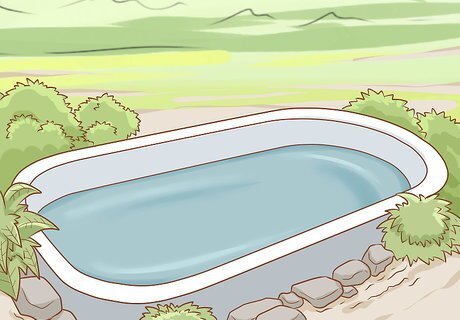
Set up a pond or a body of water. The kingfisher is an avid hunter and will wait patiently on a perch before swooping on a fish it wants to eat. By setting up even a small pond or water container in your garden, you might be lucky enough to entice a few kingfishers to come hunting. Large tubs can be bought at garden centres if you are short of space or don't want to dig out a pond. If buying a tub, fibreglass containers will last longer than plastic ones but will also cost a lot more. Kingfishers have been recorded diving up to 1 metre (3.3 ft) to catch fish so make your pond or water feature deeper than that if you can.
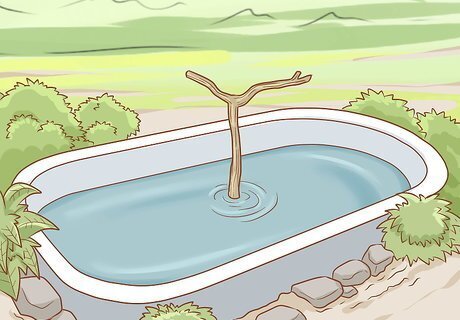
Make a perch above the water. Kingfishers like to perch and wait for their prey. You can set up a perch with just a thin branch. Just make sure it is stable enough for the birds to sit on and place it about two metres above the ground in a place where the birds can easily see the water. Washing lines, fencing and stacked rocks can also make for a good perch for these birds.
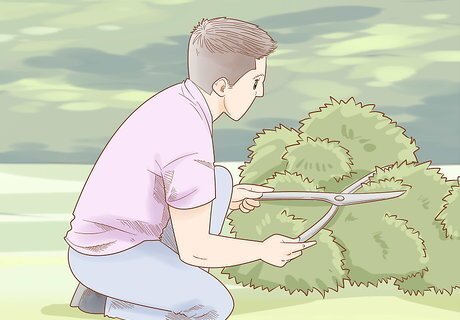
Clear plants from around your pond. Kingfishers like to hunt in clearings where there's less vegetation to obstruct their views of the water. The fewer shrubs and trees around, the more chance you have of attracting these birds to your garden.
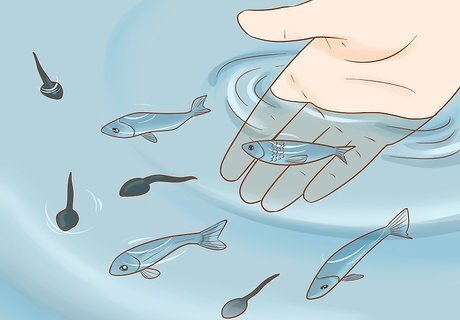
Provide the birds with small fish and tadpoles to eat. You can buy small fish destined to be fed to carnivorous fish or birds at your local pet shop. It would be best to choose colourful fish that the kingfisher can see. Kingfishers eat mainly small fish like minnows and sticklebacks. Their ideal fish would be about 23 millimetres (0.91 in) in length so keep that in mind when choosing your prey. Kingfishers also occasionally eat crayfish, snails and frogs. The more biodiversity at your place, the more likely the kingfishers will come and hunt there.

Look after your fish. Feed the fish daily and clean the tub or pond every week to keep the fish healthy. Make sure at least a quarter of the water surface is clear and visible to birds. Don't overcrowd your fish as this will prevent them getting enough oxygen to survive. Check with your pet shop on the best fish to water ratio for your set up.
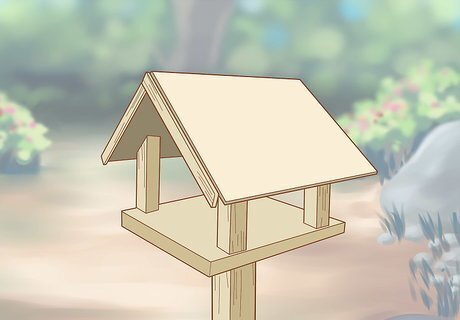
Set up a bird table. If you aren't keen on a water feature in your garden, you may have some luck with a flat tray style bird feeder instead. These bird tables can attract kingfishers if it is a harsh winter and the birds are hungry enough. They will eat offal, meat or even bread if you provide it. Set the bird table up in the open so kingfishers and other birds can see it.
Encouraging Nesting
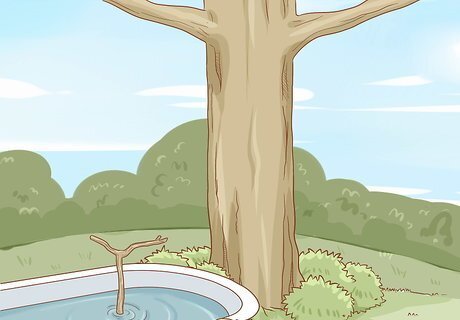
Set up a burrowing space. Kingfishers like to nest on riverbanks that are almost vertical and sparse of any plants. The birds take about a week to construct their houses. If you're clearing vegetation be sure to clear the roots too as these can interfere with the kingfishers' nesting patterns. A kingfisher's nest will extend 1–2 metres (3.3–6.6 ft) into a bank and slope upwards so that rain won't collect inside. It will finish with a 20–30 centimetres (7.9–11.8 in) chamber. Keep all that in mind if you are setting up an area for the birds to burrow in.
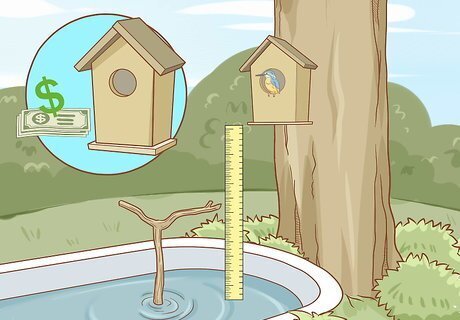
Buy a nest box. If you don't have a suitable area for a kingfisher to nest in or the idea of a barren, earthy pile in your garden is not appealing, there are artificial options that might still work to attract a kingfisher or two. Nest boxes can be bought from online retailers or some pet stores. These nest boxes mimic the tunnel that the kingfisher would burrow in the wild. Be sure to place the next box at least 1 metre (3.3 ft) above the water level of your pond, otherwise the birds will shy away from it.

Provide the nests for early spring. Kingfishers will pair up and look to nest and breed in early spring and lay their eggs shortly after. You'll have more luck attracting the birds if you have a nesting area or nest box ready for them at that time.
Setting the Mood
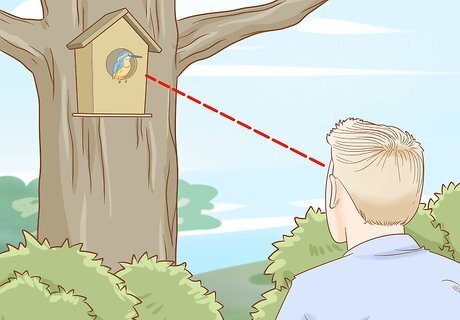
Keep quiet and observe the birds carefully. Keep your garden as quiet and peaceful as possible to attract kingfishers. These birds are naturally suspicious and wary of humans so you'll have to be very patient.
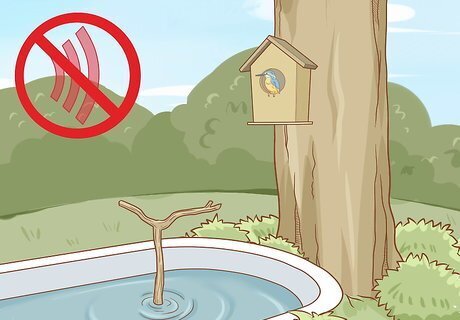
Watch from a hide. If kingfishers start frequenting your garden and you want to get close to them without disturbance, consider building a hide to watch from. A hide can be a simple canvas pop-up blind to hide behind as you watch or photograph the birds. You can also make a hide from large palm fronds placed against poles, as long as it looks natural and can hide you as you watch. It might take the kingfishers about a month to get used to a hide being in their space and they might be wary of it until it becomes a normal sight for them.
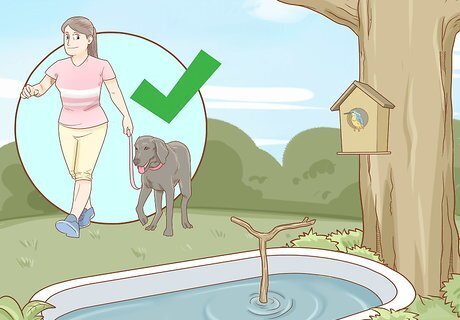
Control your animals outside. Because kingfishers nest on the ground, they are extremely vulnerable to cats and dogs and will shy away from areas where these animals live. If you have a cat you can construct an outdoor run for it so it can enjoy the garden but still be kept away from local bird life.
















Comments
0 comment